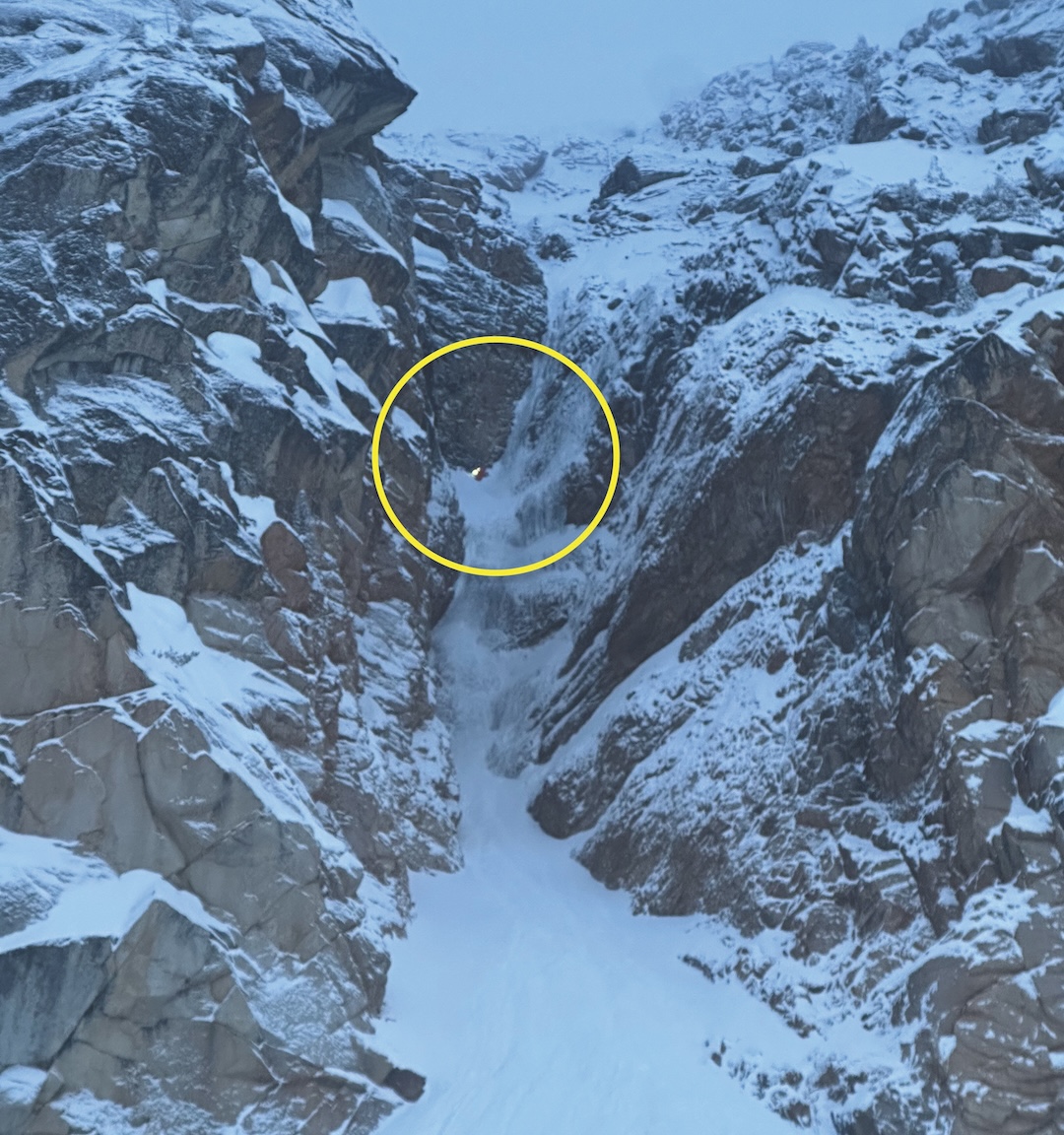Fall From Anchor — Rappel Ring Detached from Slings
Washington, North Cascades, Cutthroat Peak

On April 28, Thomas Gilbert and Philip Bond were descending the Cauthorn-Wilson Route on Cutthroat Peak in the North Cascades. The route is a seasonal ice climb (7 pitches, WI4). At approximately 8 p.m., a rappel failure caused Bond to fall 400 feet, taking the ropes with him. He fell 120 feet down WI3+ terrain, then another 260 feet down steep snow. He survived and came to rest in deep snow at approximately 7,200 feet elevation. Gilbert was left at the rappel station with no ropes and no way of safely downclimbing. Both climbers had a Garmin inReach and were able to initiate an SOS.
Chelan County Mountain Rescue (CCMR) was notified at approximately 10 p.m., and a team of three was assembled. The weather was deteriorating, so time was critical. They decided to move through the night to reach the location. CCMR personnel left Wenatchee around 11:40 p.m. and were hiking toward the climbers at 2:45 a.m. on April 29. The CCMR team was joined by two members of Okanogan County Search and Rescue (OCSAR). They arrived at Bond’s location at 5 a.m.
More members of OCSAR and CCMR were dispatched, and Naval Air Station Whidbey Island (NASWI) was requested to prepare for a helicopter extraction. Two members of CCMR climbed to Gilbert, reaching him at 7 a.m. The team below stabilized Bond’s injuries and warmed him using sleeping bags, “chem kits,” food, water, and shelter. The two CCMR climbers lowered Gilbert to the other team members. Around 10:20 a.m., the weather cleared enough to allow NASWI to hoist out the stricken climbers. All rescuers were able to hike out.
ANALYSIS
A failure at the anchor caused Bond to fall almost as soon as he weighted the rappel ropes. The anchor consisted of three pitons connected by a 6mm cord. Attached to an equalized point on that cord was a rappel ring. The climbers were using twin ropes, and the ropes were threaded through the rappel ring. There did not appear to be any cord or gear failure at the anchor itself and the rappel ring was still threaded by the ropes that fell with Bond. There was no evidence of broken slings or cordage.
It is believed the rappel ring was not tied directly to the anchor cord but was girth-hitched to the cord. The hypothesis is that the climbers grabbed the “wrong side” of the rappel ring, which caused it to rotate and detach itself. It is believed that the cord was lightly frozen and the climbers, who were in a hurry to get down, did not notice that the girth hitch had “flipped” when they were feeding their ropes.
We have noticed that girth-hitching anchors is becoming increasingly common in our area, and the above illustrates this lesser-known hazard. Climbers should properly inspect anchors to ensure they are sound. More accidents are occurring from bad rappel slings. We recommend cutting off old cord and slings. Use a locking carabiner or “cheapskate locker” in place of rappel rings. Pear-shaped carabiners have less of a chance of “rolling” in the cord than rappel rings.
Also, the rappel should always be properly weight-tested before one detaches their personal anchor system. (Sources: Chelan County Mountain Rescue, Okanogan County SAR, and the Editors.)


